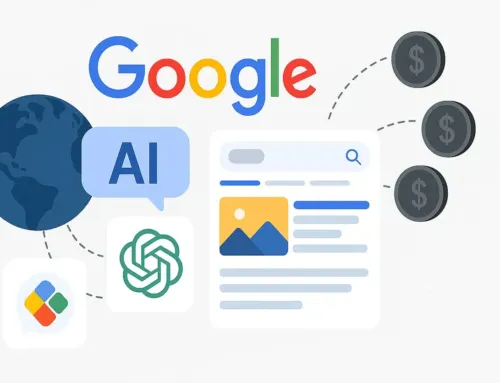Website Content Optimisation.
Site Visitors Don’t Read Every Word, They Scan.

Visitors don’t browse your website the way you think. They don’t read – they scan. In fact, most people decide in under 10 seconds whether they’ll stay or click away. That’s why website content optimisation isn’t just helpful – it’s essential.
Your content must guide the eye, deliver value instantly, and drive action. If it doesn’t, it’s not doing its job.
Here’s how to structure your content to match real visitor behaviour—and turn scanning into action.
Why Scanning Behaviour Changes How You Write
We live in a scroll-and-skim culture. Visitors are:
- Looking for specific answers
- Skimming headlines and bold text
- Skipping dense paragraphs and fluff
- Clicking only when they see value immediately
Your job? Make sure they see what matters before they bounce. That’s the core of website content optimisation.
Structure Content for Quick Comprehension
Your website has one chance to make a strong impression. Optimising your structure ensures users get the message fast.
1. Headings Should Tell a Story
Use headings that summarise the section clearly. Treat them like signposts—they should tell the reader what to expect and encourage them to keep going.
Avoid generic labels like “Solutions” or “Learn More.” Instead, try:
- “Custom Website Design for Growing Businesses”
- “Why User Experience Matters”
2. Use Short, Sharp Paragraphs
Each paragraph should contain one clear idea. Aim for 2–4 lines maximum. This improves readability, especially on mobile screens where text blocks feel heavier.
Use active voice and everyday language. This isn’t the place for marketing fluff—say exactly what your service does and how it helps.
3. Highlight What Matters
People won’t read everything—but they will notice:
- Bolded phrases
- Bullet summaries (used sparingly)
- Visual patterns (white space, images, icons)
Structure pages so that even a quick glance communicates key benefits.
4. Avoid Dense Text and Visual Overload
Don’t cram every benefit into a single section. If your visitor needs to dig for information, they won’t. Instead:
- Spread information across clean, spaced sections
- Use subheadings to break up topics
- Eliminate jargon or explain it in plain terms
5. Put CTAs Where People Look
Calls to action should be visible and timely. Don’t wait until the end of the page. Place them:
- After a major benefit or result
- Mid-page, once interest is established
- At logical decision points (like after social proof or pricing info)
Use active, benefit-led language:
- “Book your free strategy call”
- “Get a custom website quote”
Ready to Turn More Visitors into Leads?
We help Brisbane businesses create structured, scannable content that drives enquiries. Get a free content audit today.
Make SEO and Content Work Together
Strong content doesn’t just engage visitors—it helps you get found. Here’s how to blend SEO into your structure without losing clarity.
Use Focus Keywords Smartly
Your primary keyword—“website content optimisation”—should appear in:
- The H1 (page title)
- One to two subheadings (naturally)
- Early in the intro paragraph
- Throughout the page at ~1–2% density
Avoid awkward insertions or keyword stuffing. Write for humans first, search engines second.
Use Internal Links With Purpose
Linking to relevant internal pages helps both readers and SEO. Include links to:
Use descriptive anchor text that matches user intent. Don’t just link “click here.”
Optimise for Mobile and Speed
If your content looks good on desktop but falls apart on mobile, you’re in trouble. Make sure:
- Paragraphs break naturally on small screens
- Font sizes are readable without zoom
- CTAs are spaced and easily clickable
Also compress images, lazy load non-critical elements, and use caching to improve load speed.
Add Visual Cues Without Noise
Visuals support your message—they shouldn’t distract. Use:
- Icons to support bullet lists (sparingly)
- Charts or infographics for processes or stats
- Section dividers to guide the eye
Avoid using stock images for the sake of it. Each image should have a job: explain, support, or highlight.
Don’t Make These Common Mistakes
Even well-designed sites lose leads if the content isn’t right. Watch out for:
Weak or Generic Headings
“Solutions” tells the reader nothing. “SEO That Gets Brisbane Leads” does.
Overuse of Bullet Points
Bullets are helpful but shouldn’t dominate the layout. Use them only to summarise 3–5 key points—not full sections.
Passive Language
Phrases like “services are offered” sound lifeless. Use direct, active phrases like “We build”, “You get”, “Start now”.
Ignoring Scannability in Blog Content
Content marketing still needs structure. Break blogs into clear H3 sections, add summaries, and use pull quotes or stats where helpful.
What Great Content Looks Like (Examples)
Let’s compare weak content to optimised content.
Before:
“We provide a variety of digital services to help you succeed online.”
After:
“We design SEO-ready websites that help Brisbane businesses get found and generate leads.”
Before:
“Contact us today to learn more.”
After:
“Book your free strategy call now—see what’s holding your content back.”
Optimised content is clear, specific, and focused on action.
Tools That Help You Optimise and Improve
Here are a few reliable tools that support website content optimisation:
- Hemingway Editor: Simplifies your text and flags complex sentences
- Hotjar: Tracks scroll depth, clicks, and heatmaps so you can see what users ignore
- Google Analytics: Reveals bounce rates, time on page, and user flow
- Google Search Console: Helps you monitor keyword performance and indexing issues
Use these tools monthly to keep your content sharp and data-informed.
Make Your Website Content Do the Work
If your content isn’t structured to match user behaviour, you’re not just losing attention—you’re losing conversions.
Website content optimisation turns scattered, wordy pages into lead-generating assets. It’s not about writing more. It’s about making every word earn its place.
Want content that delivers leads, not just clicks?
Let’s Build a Website That Converts
Scorched Media specialises in website content optimisation that makes sense for real users. We help Brisbane businesses create fast, focused, lead-ready sites.
FAQs
1. What is website content optimisation?
It’s the process of making your website easier to read and use. It helps visitors find what they need quickly, and helps your site rank better in search results.
2. Why do people scan instead of reading online?
Most people are busy. They skim pages to find answers fast. If your content is hard to scan, they’ll leave.
3. How do I optimise my website content?
Use clear headings, short paragraphs, and strong calls to action. Make sure your content works on mobile and includes keywords naturally.
4. How does website content optimisation help SEO?
It improves how search engines and users interact with your site. Clear structure and smart keyword use boost visibility and engagement.
5. Do I need to update my content often?
Yes. Review and update every 6 to 12 months—or when your services or audience changes.




